I didn’t think I’d be doing another Tottenville page, to be frank with you. I’d thought I had said all that needed to be said, the town’s history and my own history with the place, on FNY’s first Tottenville page in 2010. I have to say, I find it pretty comprehensive. There’s also an extensive section in FNY’s last Stations of Staten Island Railway page, as well as a couple of pages on Tottenville’s lesser-known historic houses, the Biddle House, the Rutan-Journeay House, and Main Street’s Masonic Temple.
I was back in Tottenville not only because I find it a great place to relax, a small town at the south end of New York State, but because I needed to get photos of what remains, in November 2017, NYC’s newest public transportation station, Arthur Kill on the Staten Island Railway. It opened in January 2017 to replace the Nassau and Atlantic stations, which had been allowed to slip into decrepitude.
I was here the second weekend of October. In 2017 summer was slow to exit and the air was humid and thick, with a slate grey overcast. Cloudiness is better to get even lighting for photography, but I do most of my forays in bright sun, when I’m more energized. Today, I thought I’d explore some parts of Tottenville I had previously overlooked. Forgive me if I repeat any info from the links above.
GOOGLE MAP: TOTTENVILLE WALK 2017
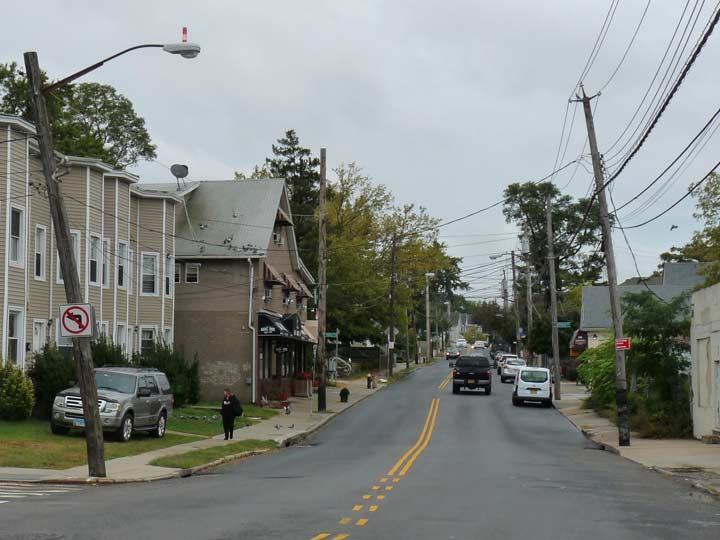
Arthur Kill Road doesn’t look very imposing, but it ranks among the lengthiest in Staten Island, running from Richmondtown to Tottenville. In fact it can be considered a western extension of Richmond Road, which, just as the Ohio River is formed from the confluence of the Allegheny and M onongahela Rivers, is produced from the inflowing of Van Duzer Street and Vanderbilt Avenue, which go to the St. George Ferry and Clifton, respectively. Staten Island’s main routes flow out of each other like great rivers!
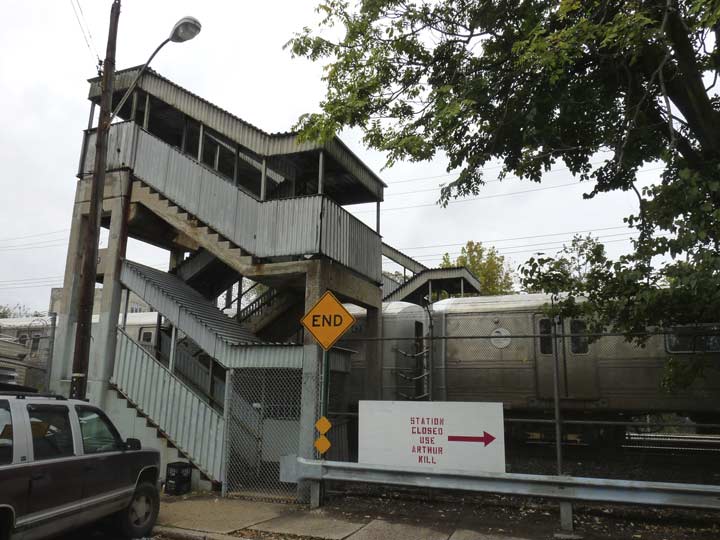
A Staten Island Railway train passes by the entrance to the former Atlantic station at Tracy Avenue. While the platforms have been dismantled without trace, I hope that the crossovers, which have been left in place, are rehabbed and reopened. As is, there is just one pedestrian crossover remaining, at Main and Utah Streets, serving the Tottenville terminal.

When I passed by Borders Convenience Store I was sure that it had been there for years and perhaps decades, serving commuters entering the station. Not quite. Street View indicates that it had been a sign production shop as recently as 2012.
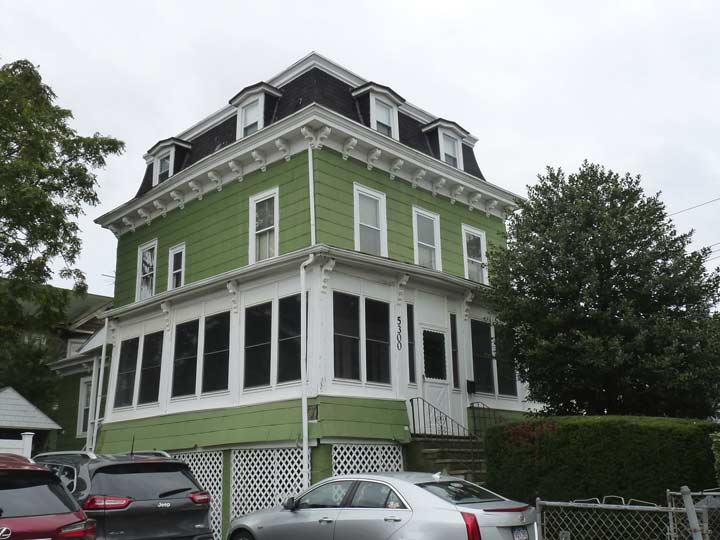
5300 Arthur Kill Road at Lee Avenue was constructed in 1868 by Andrew Abrams. It contains several French Second Empire style architectural elements, including the slanted roofline and dormers. Older photos show that the enclosed porch was once outdoors.
Lee Avenue was likely named for a family of Tottenville carpenters, Robert Lee and sons James and William.
I turned left on Yetman Avenue, named for a prominent Tottenville family that included realtors and teachers. I gravitated toward the smallish saltbox-style houses since they are likely the oldest. 214 (left) was built for mason Hiram Reid in 1882, while 217, right, hides its age behind siding. It was likely constructed around 1860.
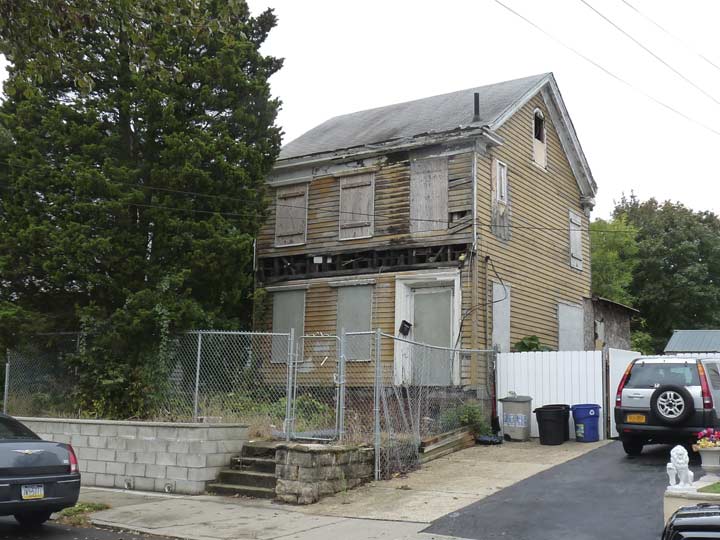
I’m showing this decrepit building on Yetman awaiting either rehab or demolition for a reason. In recent years, its exterior porch has been stripped away and you can see its original outlines.

Turning on Amboy Road I paused to pay respects to Tottenville’s Carrere and Hastings-designed Classical Revival public library, which was bestowed in the early 20th Century by a grant from industrialist/philanthropist Andrew Carnegie. John Carrere and Thomas Hastings also masterminded the great main branch at 5th Avenue and West 42nd Street and the Staten Island Borough Hall. Tottenville was the home of Staten Island’s first public library in 1899, a rented house on Johnson Avenue holding 230 volumes.
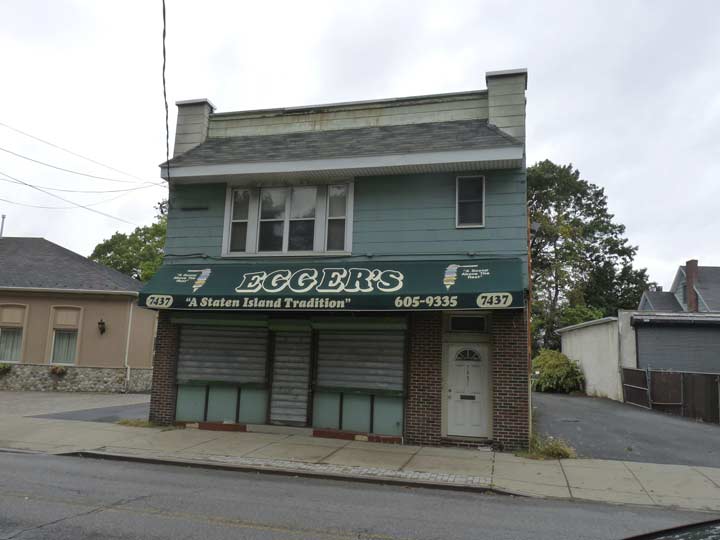
Whenever in Tottenville, I had always gotten something here at Egger’s Ice Cream on Amboy Road near Yetman. I was disappointed in October 2017 to find the Tottenville branch closed. However, Egger’s original locale in Port Richmond is going strong, and so is a new location in Pleasant Plains.
I drive people nuts because when asked what my favorite flavor ice cream is, I invariably answer, “vanilla.” I’ll add sprinkles, which are for winners. I will also get a mixed bowl of chocolate and vanilla.
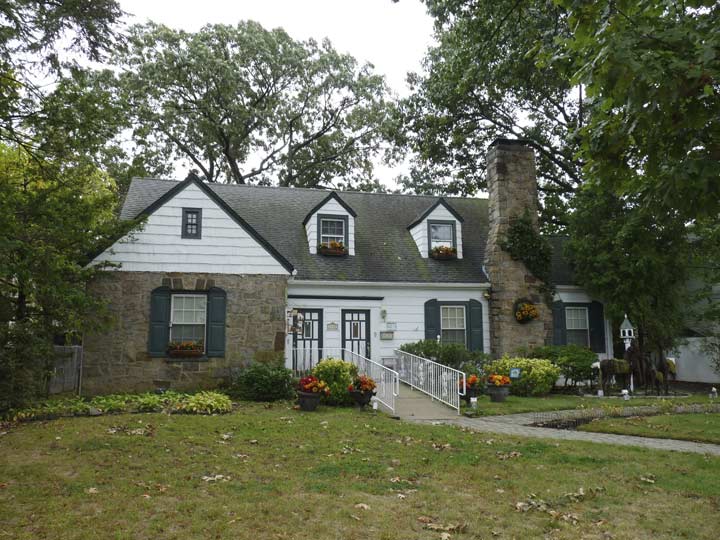
The library’s next door neighbor is 7440 Amboy Road, which was built for a dentist in 1935. I like the uneven granite stones used on the exterior, and my hunch is that the chimney goes to a still-working fireplace.
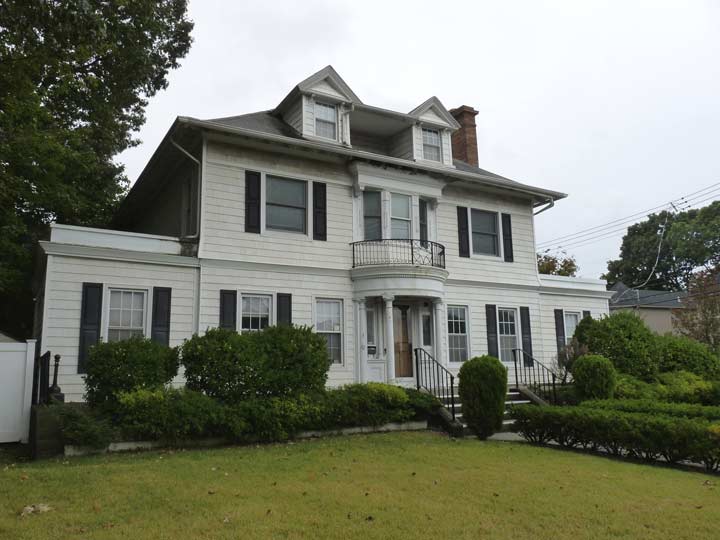
7448 Amboy Road at Brighton Street, now home to real estate and attorney’s offices, was built in 1908 for Charles Thrall, the foreman at Atlantic Terra Cotta, for which the former railroad station was named.
Atlantic Terra Cotta Company was once one of Staten Island’s largest employers, who made the decorative materials used on skyscrapers (including the Woolworth Building, Coney Island’s Child’s Restaurant, and Philadelphia Museum of Art) and for fire-resistant cladding. The company’s smokestack was a familiar Tottenville landmark for 80 years until 1988 with the demolition of the 135 foot structure.
Turning left on Brighton Street, the star of the block is #24 at Summit Street. This clapboard classic was constructed in 1893 — one of the peak decades for American architecture — by Harry Bedell, who was working for the S. S. White Dental Works in Price’s Bay at the time. It was purchased by Charles and Tina Kaasman-Dunn in 1982 and lovingly restored inside and out. The owners are proud of the surviving carriage house to the building’s rear.
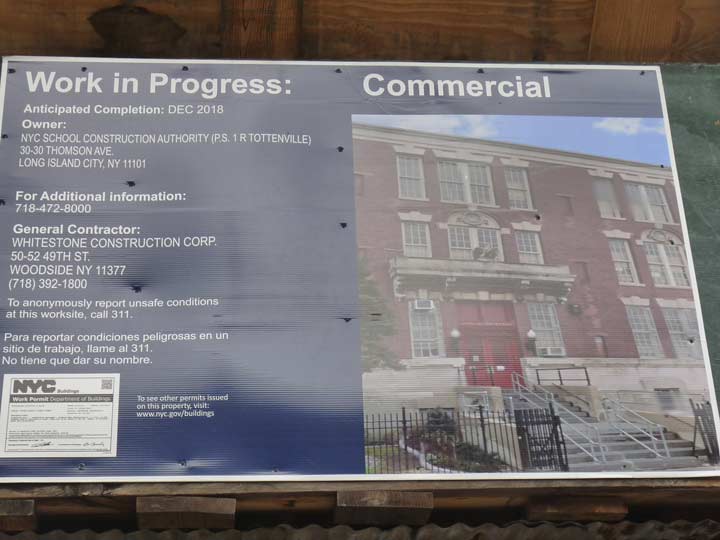
As is often the case when I want to see an interesting building, Tottenville’s PS 1 on Summit Street off Brighton was completely swathed in construction netting in October 2017. It was designed by prolific schols architect C.B.J. Snyder and opened in 1906. Terra Cotta produced by the Atlantic works was used in the trim, including an eagle perched above the front entrance.
As was also the case elsewhere in Staten Island in Travis, a predecessor school building has been retained even after the newer building opened. this was also the case in Tottenville where the District 5 school, built in 1878, can be found adjacent to PS 1.
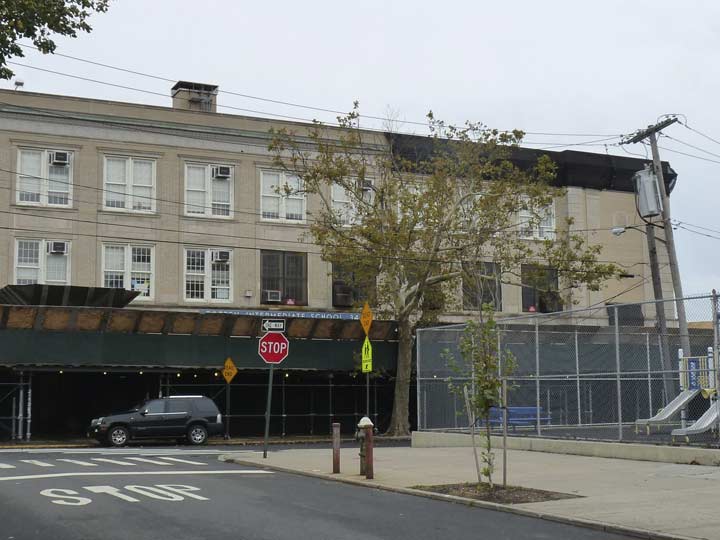
To make it a daily double, Tottenville’s Number 34 Intermediate School was also enclosed in construction netting, but not completely. Academy Avenue, where it is located, was likely named for the presence of two schools. It serves to redirect Yetman Avenue, but is otherwise a dead end at both ends. Quite strange.
The Roman Catholic Our Lady Help of Christians was established in 1890 when the number of Catholic families in Tottenville had increased to over 50; prior to that, Catholics traveled on rutted farm to market roads to Rossville on Sundays to worship. Its original Romanesque building was constructed at Amboy road and Yetman Avenue in 1898, with the present Modernist church replacing it in 1990. The parish school was founded in 1910, with the present building opening in 1956.
Dorothy Day, the founder of the Catholic Worker movement, was a Catholic convert and was baptized at Our Lady Help of Christians in 1927. For several years Day resided in southwest Staten Island in a housing project set up by Spanish immigrants in the mid-20th Century; it was razed in 2000.
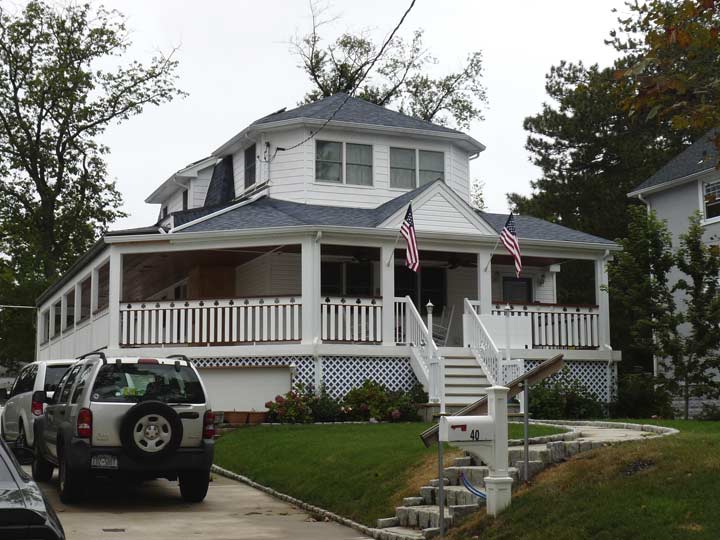
#40 Brighton, which is near a bizarre S-curve Brighton Street takes, appears to be older than it actually is, set back from the street with a wide lawn and an angled porch. The porch, though, is a recent addition and doesn’t show up on the 2012 Street View.
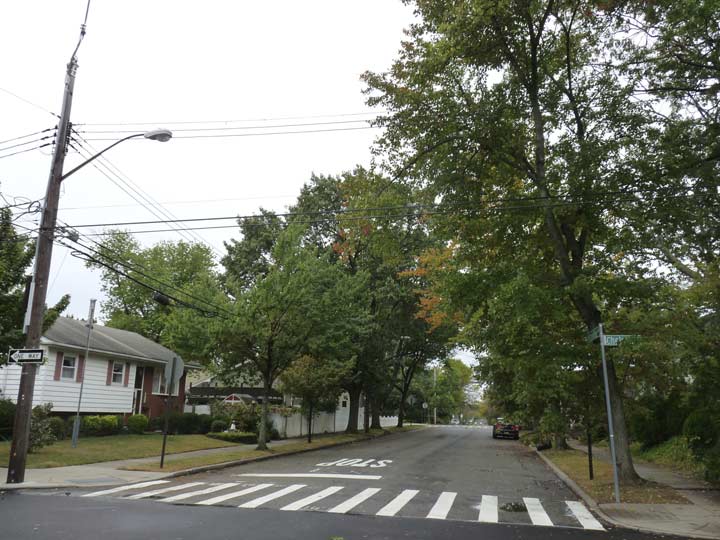
Pittsville Avenue runs six blocks from Yetman Avenue west to just past Carteret. The name of the street has always perplexed me, because while Tottenville features some streets named for towns in New Jersey such as (Perth) Amboy and Carteret, there are no Pittsvilles within hundreds of miles of Tottenville; instead, there are Pittsvilles in Maryland, Missouri, Pennsylvania, Texas, Virginia and Wisconsin.
The center section of Tottenville, between Amboy Road and Hylan Boulevard, has been largely populated only since the mid-1970s. When I took a bus ride out to Tottenville in 1972, I found both Carteret and Swinnerton Streets to be dirt traces through woods south of Amboy Road. Obviously this isn’t the case anymore and there are handsome streets complete with sidewalks, shade tree canopies and well-built homes.
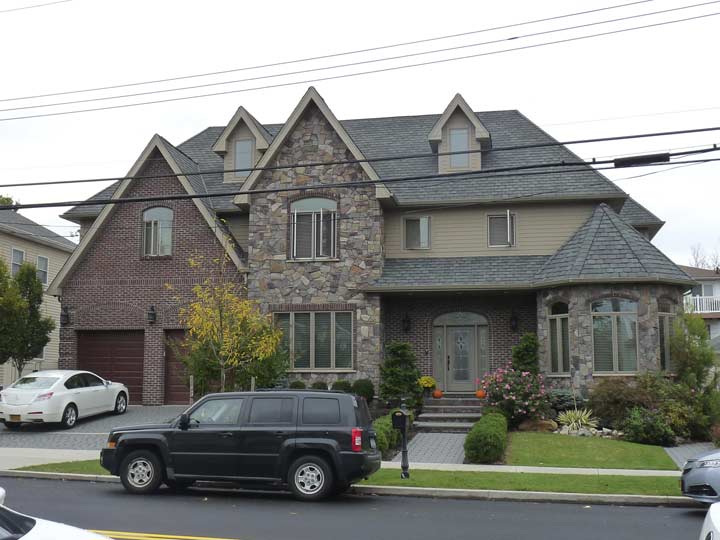
Carteret Street mansion

I found the dividing line between the “new” and “old” sections of Carteret Street south of Amboy Road relatively easy to discern. Here, there are newer houses shown to the left, but an older house from the early 20th Century on the right.
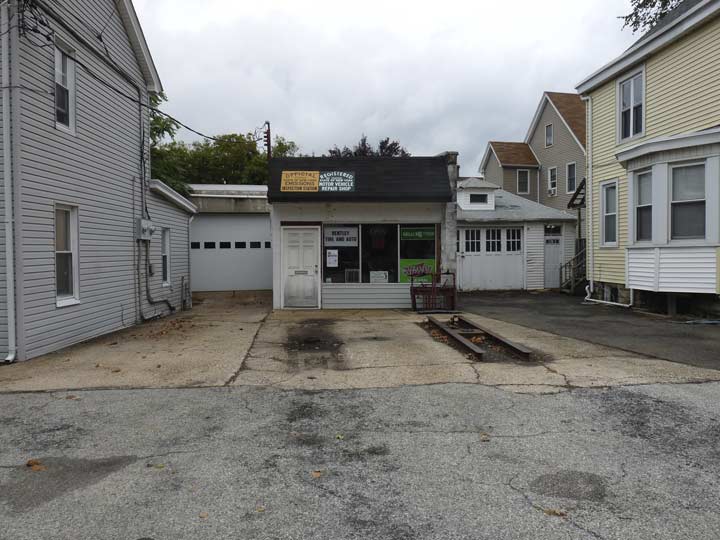
A fairly forlorn small filling station at Amboy Road and Carteret Street. You can see the slots where the pumps used to be.
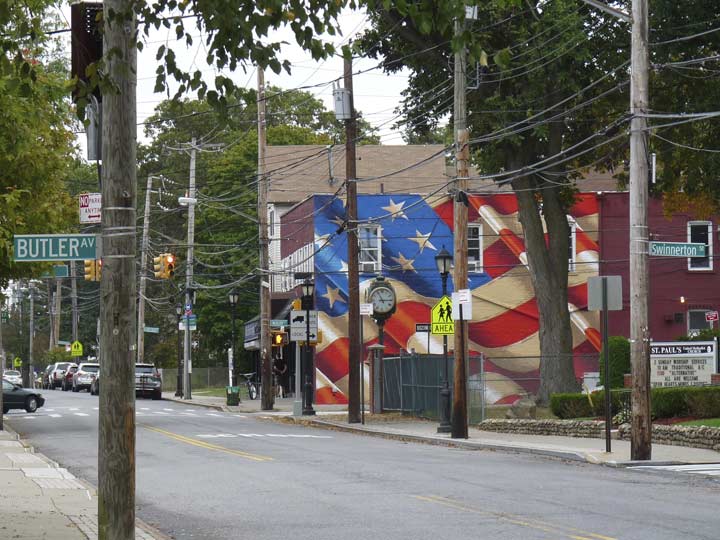
A look east on Amboy Road past the 1883 St. Paul’s United Methodist Church to the heart of Tottenville at Main and Amboy. The building on the corner, home of the Tottenville Tavern, a diner I have frequented, has a gi-normous American flag painted on it and, while I’m ordinarily a proponent of flying the colors, this does seem like bit much.
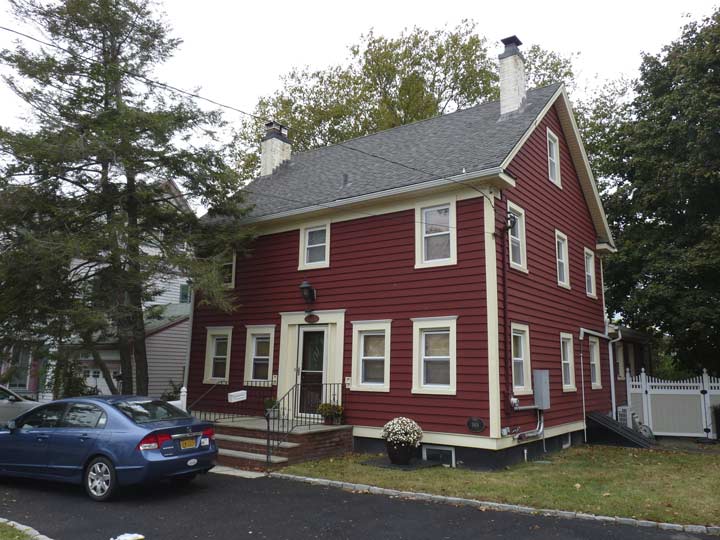
7631 Amboy Road at Aspinwall Street. A plaque on the lower right of the building gives the construction date as 1810, but it’s not quite that old. It was constructed by carpenter Melanchton Rutin in 1850; the Rutan family constructed many buildings in western Tottenville during the 1850-1860 period.
The Aspinwall name, meanwhile, appears on a large tract in this 1873 Tottenville map. I’m not sure if the w is pronounced or not; it’s not in Britain, like the w in Greenwich.

An inclusive lawn sign on 7635 Amboy.
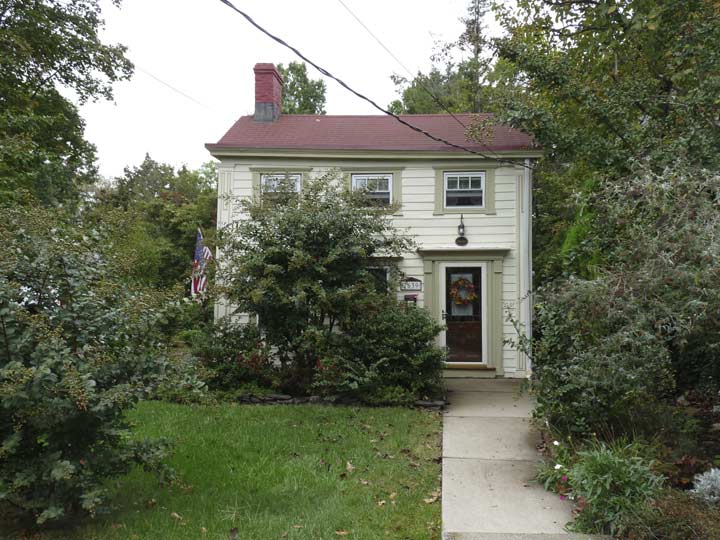
The cottage at 7639 Amboy Road, west of Bentley, looks like one of the smaller freestanding homes in Tottenville. It was built in 1850 for ship jointer Abraham Romaine. It looks smaller than it is, however, as additions were made to the rear.
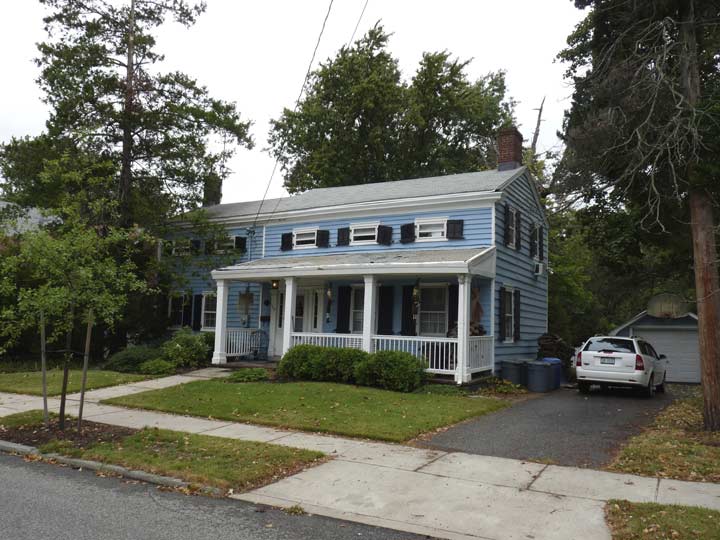
While Tottenville unfortunately has no Landmarked districts, some individual dwellings have gotten designation such as this cottage at #7647, the Rutan-Journeay House,one of the oldest privately-owned buildings in Tottenville, constructed in 1848:
The Rutan-Journeay House is one of the earliest documented houses of newly created Tottenville, and the first on Amboy Road. Through its first two owners the house has close ties to the shipbuilding industry, which flourished in Tottenville from its beginnings in the 1840s through the early 20th century. Shipbuilding and ship repair were important partners of the oyster industry that created the town. NYC.gov
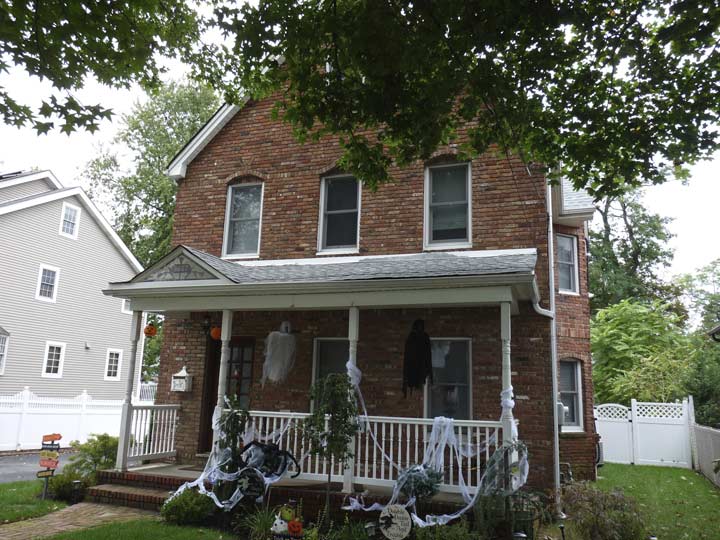
Relatively rare brick facing on 7657 Amboy Road at Finlay Street. Older photographs, though, show that the once-more elaborate porch has largely been stripped of its old character. Check the stained glass treatment on the pediment above the main entrance.
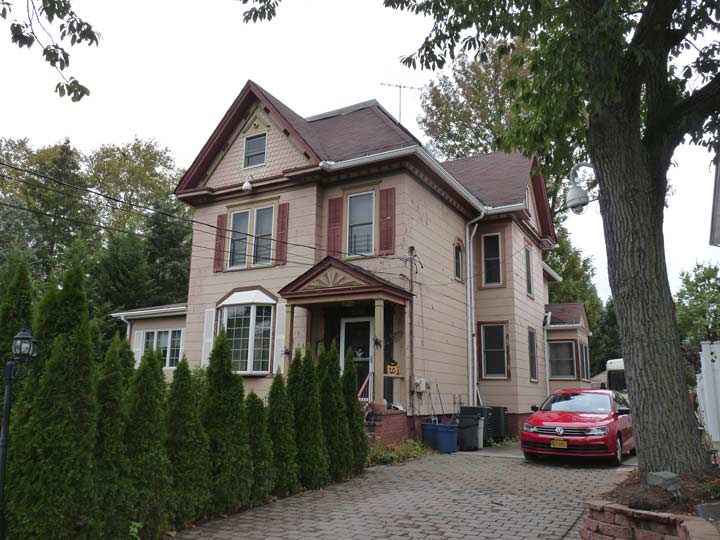
Beieve it or not I had never taken Amboy Road all the way down to the water’s edge at the Arthur Kill, separating Tottenville from Perth Amboy, NJ. This pink house, mostly resided but with some remaining trim at the roof pediment, at #7743 opposite Satterlee Street was constructed in 1889 for bookkeeper Gilbert Barnes, who later became the president of Tottenville National Bank. That bank building still stands at Main Street and Craig Avenue.
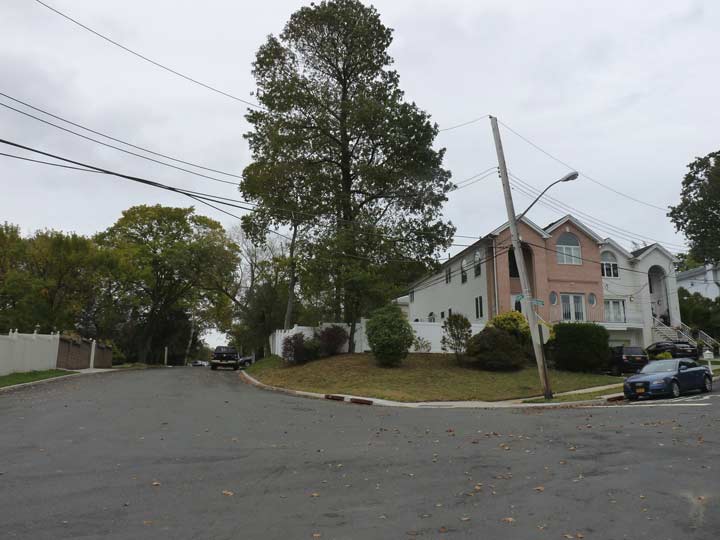
Amboy Road (left) ends quietly at Wards Point Avenue (right). The mostly two-lane road is a through route from Tottenville to New Dorp, where it branches off from Richmond Road.
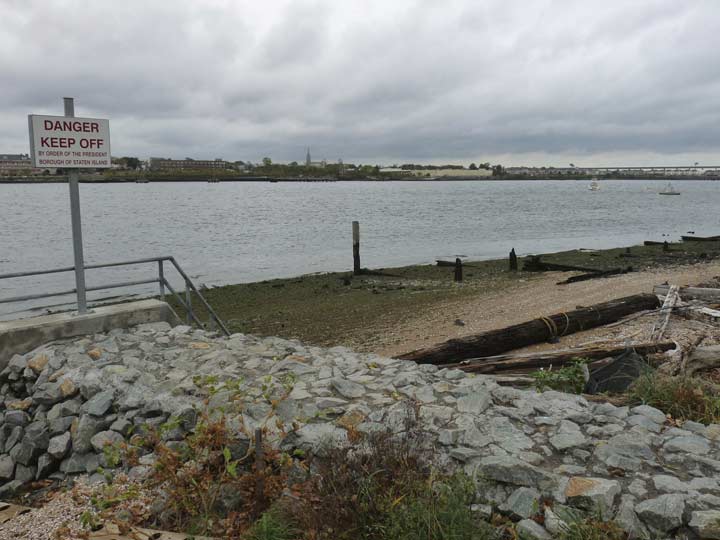
Well, when the borough president tells me something, I listen, though I did notice some people had clambered down to the beach along the Arthur Kill. If I turned left and followed the shoreline, I would have wound up at NY State’s southernmost spot at Ward’s Point. It is marked by a stanchion that is replaced from time to time because of storms.
The point is named for the Ward family, who for a time owned the historic Conference House. After the American Revolution, what became known as the Conference House passed through many successive owners after the loyalist Billopps were forced to vacate. The building was purchased by Samuel Ward for his son Caleb Ward Senior, who divided the property into smaller parcels for his five children and his many grandchildren. A family scion, Caleb T. Ward, developed Stapleton; his mansion still stands on Ward Hill near the St. George Ferry in New Brighton.
I’ve never been to Perth Amboy, though I’ve seen it often enough from here. I imagine I would have taken the ferry from Tottenville had it not ceased operations in the early 1960s (then, it would have been feasible for me to take the ferry from Bay ridge to St. George; the SIR to Tottenville; then the ferry to Perth Amboy). The tall spire is the impressive Roman Catholic church of St. Stephen/St. John Paul II, which, as you might guess, serves a highly Polish congregation. The Pope (1920-2005) by far the most popular pontiff in recent memory, was canonized, or became a saint, in 2014.
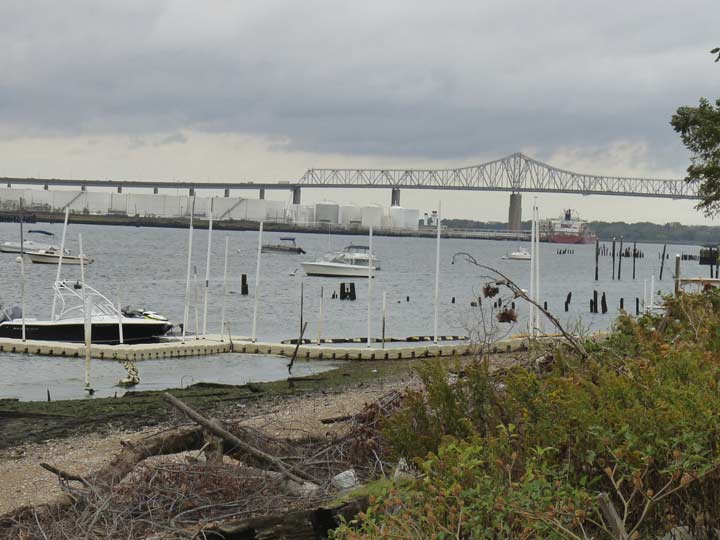
A good view of the Outerbridge Crossing is also available from here. The cantilever span connects Pleasant Plains, Staten Island, with Perth Amboy and carries NY and NJ 440. It is more or less a twin span with the original Goethals Bridge, and both were opened the same day, 6/29/1928. The original Goethals closed in June 2017 with one of two planned cable-stayed spans opening in its place. A similar replacement is being studies for the Outerbridge. Meanwhile, the Bayonne Bridge had its roadway raised to allow for the movement of larger ships in the Kill Van Kull; thus, the Outerbridge, named for Port Authority Chairman Eugenius Outerbridge, is the only one of the three Staten Island-New Jersey bridges still more or less in its original condition. It’s also the only one I’ve never been on.
In Pleasant Plains the Outerbridge connects to the Korean War Veterans Parkway.
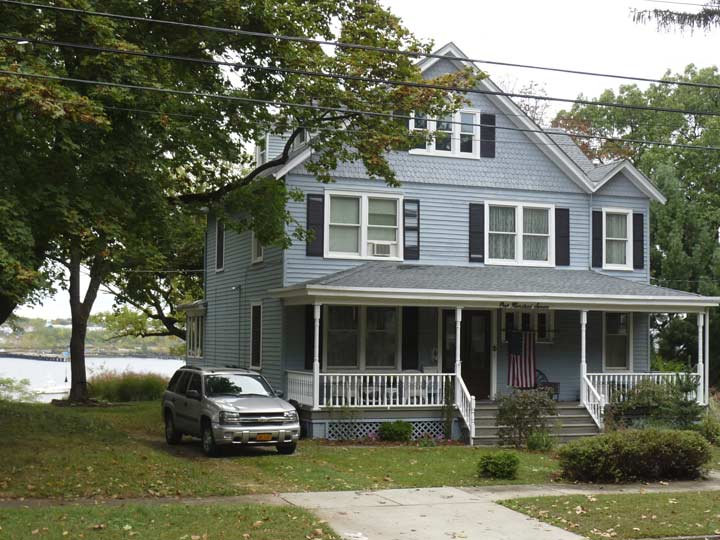
Hopping Avenue runs from the waterfront at Amboy Road northeast to Bentley Street, a block away from the former ferry landing and current SIR terminal. I had never walked it before, so now was as good a time as any. I had heard that there was some choice architecture to see here and I wasn’t disappointed.
Hopping Avenue is named for another prominent Tottenville family. In the late 1800s, Samuel Hopping operated a sawmill that is surmised was the source for many brackets and decorative items on Tottenville homes. Above is #107 Hopping Avenue, a Colonial Revival house constructed about 1906 for George C. Brown, a partner in a Tottenville shipyard firm.
Houses along the north side of Hopping Avenue have a backyard view of the Arthur Kill.
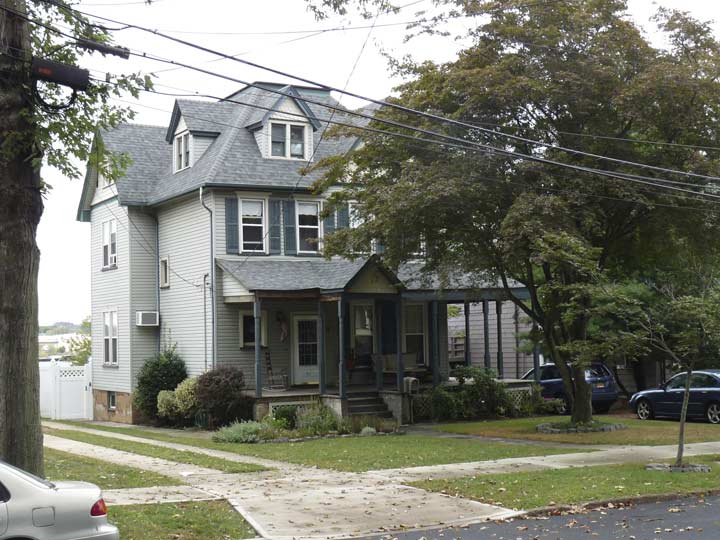
Multi-gabled 91 Hopping Avenue was constructed for oysterman D. Agnew Joline about 1900.

Incredible woodwork and detailing here at 92 Hopping Avenue, constructed around 1885 for Helen Ward.

Next door is #86 Hopping Avenue, with a distinctive oval window on the top floor, built for Ella Jolie Van Name in 1910. Many of the owner’s names are found in the Staten Island street maps and cemetery headstones.
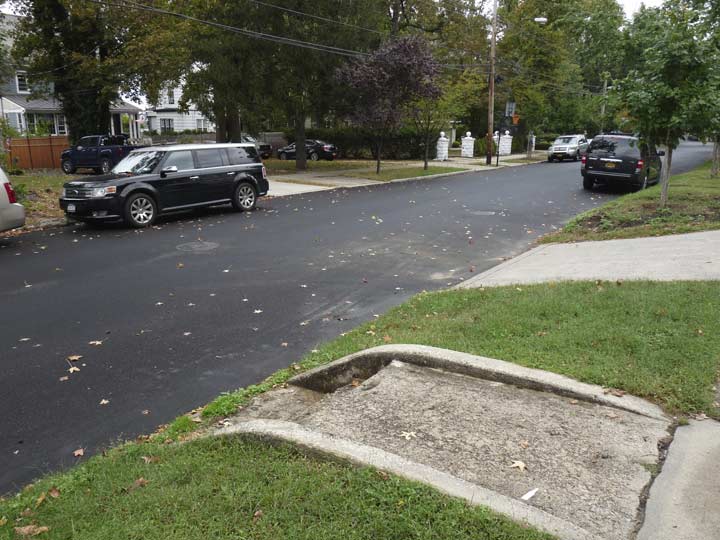
Hopping Avenue is on a lower grade than its sidewalks, where they are present. Hence, at some places, steps have been built between the street and the sidewalk.
#60 Hopping Avenue, corner of Patten Street, was constructed for railroad conductor William O’Connor in 1896. Note the intricate woodwork in the eaves. Of chief interest for me is the walkway lamp, which to me resembles mid-century Bishop Crook lamps found in the British Isles.
Hopping Avenue’s one genuine mansion is #65, constructed by Brooklyn architect Walter Cassin for salesman Frederick Baxter. Its large forested plot slopes down to the Arthur Kill behind the house, whose open plan was created with the expansive view in mind. The garage also boasts an interesting design.
Tottenville Shore Park isn’t actually a park, with benches or sitting areas; it’s a parcel that the city has decided to keep in a natural condition.
The Department of Citywide Administrative Services assigned this parcel to Parks in January 1997. Black cherry (Prunus serotina) and sweet gum (Liquidambar styracifula) trees grow throughout the property. Several black ducks (Anas rubripes), buffleheads (Bucephala albeola), mergansers (Mergus merganser), and brants (Branta bernicla) make their home here as well. [NYC Parks]
#12 and #15 Hopping face each other across the street. Both employ interesting cobblestone-style fencing.
Before heading for the train back to the ferry, I checked out some houses on Bentley. #88 is a painted Victorian-era classic clapboard house with a wraparound porch. It was constructed for John Brown, of the Brown family shipyard owners, in 1888. Its owners have kept it in fine condition.
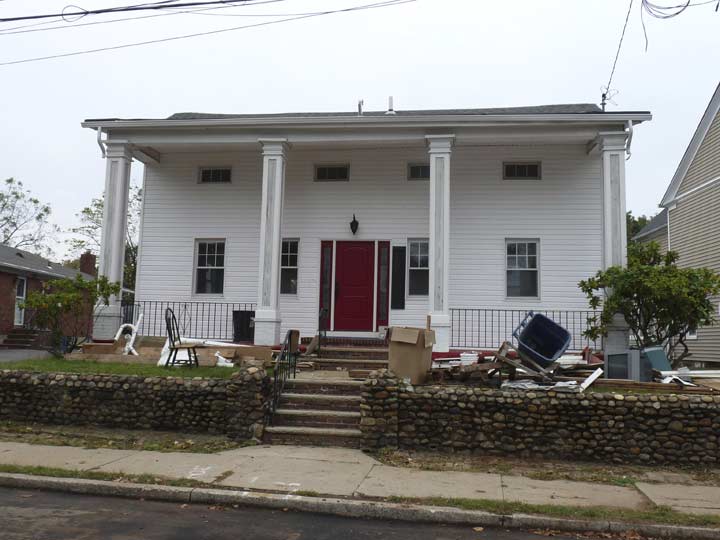
A few doors away is #76 Bentley Street, one of Tottenville’s oldest dwellings. It was constructed in 1846 by oyster fisher Aaron Van Name, who had begun purchasing lots for speculation in the area in the 1830s, before the town of Tottenville had been established. He also owned a larger home at the end of Bentley that faced the Kill Van Kull and was largely attained by sailing to it. That building was demolished several decades ago.
My favorite building on this stretch is the purple and gold #42 Bentley at Arthur Kill Road. It was built for David and Lena Williams in 1906, a bit late for all the Victorian bric-a-brac. Williams was a salesman of cemetery monuments.
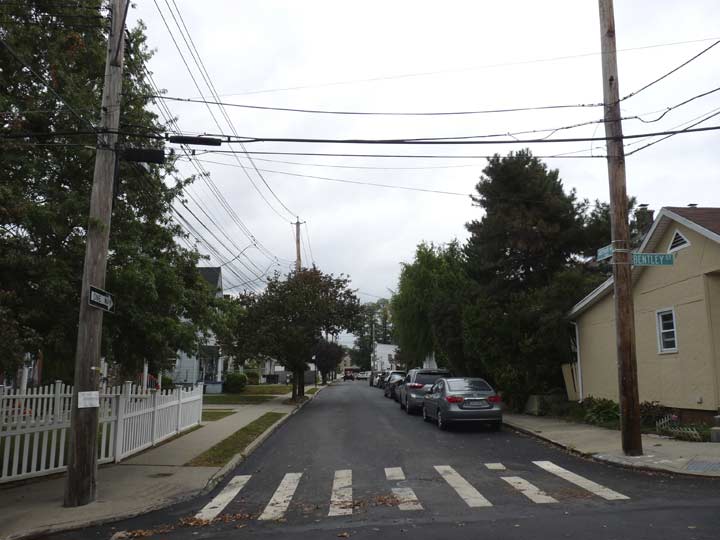
Here, Arthur Kill Road begins its lengthy journey back to Richmondtown.
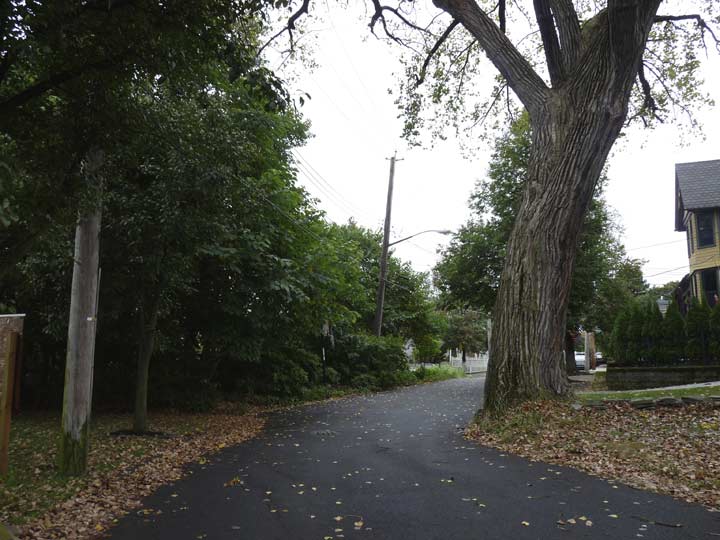
However, there’s a short dead-end stretch west of Bentley…
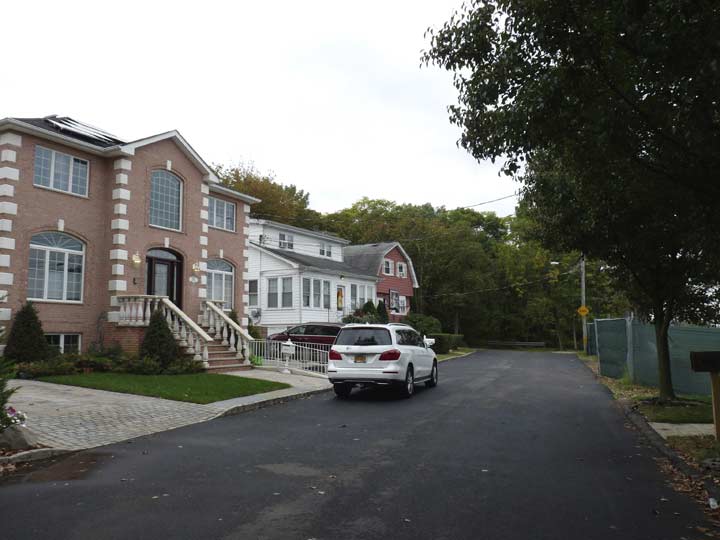
…but following it leads to some modern-day construction. Back to reality…
The former ferry landing on Bentley is less bustling than it must have been between 1860 and 1963, when it was active. Pilings from the ferry pier still stick out of the Arthur Kill.

Postcard view of Bentley Street ferry landing, ca. 1905
The Perth Amboy Ferry began service in June 1860, offering passengers steamship service between New Jersey and Staten Island. A ferry slip was located nearby at the foot of Bentley Avenue. The service between Perth Amboy and Tottenville was profitable, especially in conjunction with the Staten Island Rapid Transit rail. Even after 1928, when the Outerbridge Crossing connected Staten Island to New Jersey, the ferry remained popular because it was so reliable. Finally though, in October 1948, the Charles Galloway made the final regular trip to Tottenville for the Perth Amboy Ferry. Over the next fifteen years, the Sun Rise Ferry Corporation provided scaled back operations with smaller boats, but in 1963 that service was canceled as well. [NYC Parks]
There was a time when Staten Island Rapid Transit, now Staten Island Railway, began and ended its run at dual-mode rail and ferry terminals!
Time for the lengthy trip back to Little Neck. The first leg is Staten Island Railway, the only place that R-44 cars, first introduced in 1971, are still in active use, though several years ago the original orange and yellow seats were removed in favor of robins-egg blue seats.

On the ferry, we hailed the tugboat Lyman, seen here hauling an oil tank in Upper New York Bay within view of the Verrazano Bridge.
How did I know so much about Tottenville? It’s easy when you can consult Barnett Shepherd’s excellent Tottenville: The Town The Oyster Built [Preservation League of Staten Island, 2008].
Check out the ForgottenBook, take a look at the gift shop, and as always, “comment…as you see fit.”
11/12/17



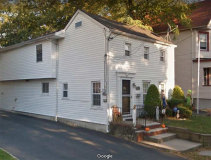
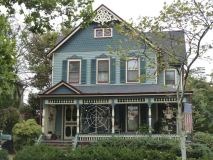
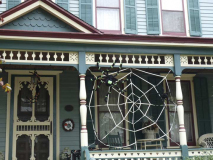
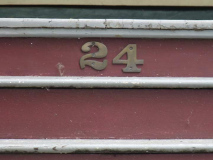

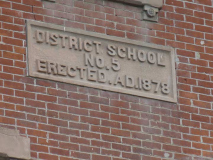
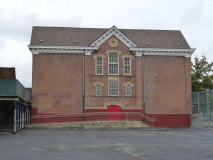
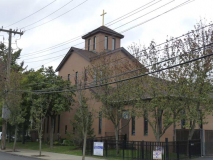
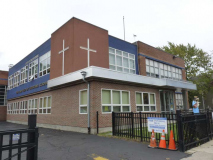
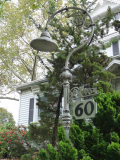
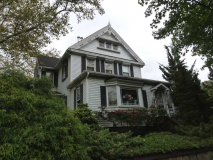
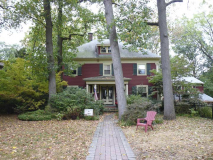
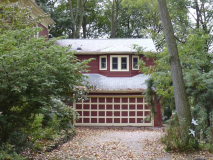
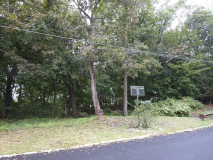
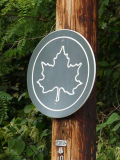
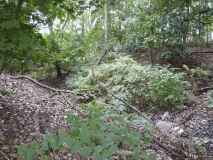
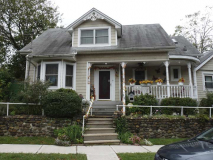
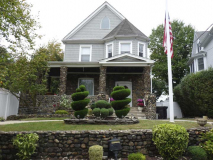

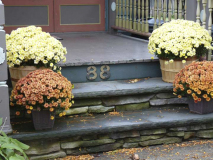

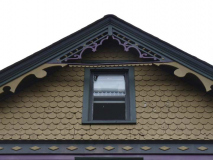


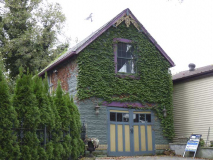
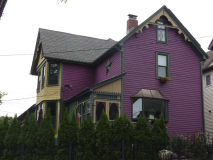

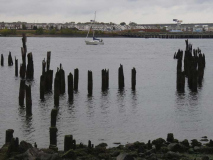
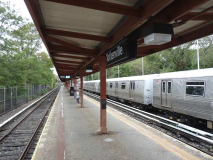
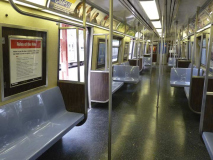
18 comments
Thank you, I love your excursions to Tottenville since I grew up there. I attended PS1 (class of 1965) and I enjoyed seeing that it is being repurposed. I remember the Perth Amboy ferry and I used to get the train at the Atlantic station (and I remember the Atlantic smokestack). Thanks again
and I remember going to school with you. Hope you are well these days.
Re: Academy Avenue. Given the S-curve at Brighton Street, I wonder if Academy did connect or was supposed to connect to Brighton at that jog?
Beautiful pictures ! I’m glad you made it to Hopping Ave. We live at 65 Hopping. I wish I had seen you, I would have given you the “Grand Tour”. The house is featured during Tottenville Historical Society Walking Tours, usually once a year if you can ever make it. The house has a grand water view from the large back porch over looking the Arthur Kill. You are welcome to visit if you are ever back this way.
Will do
R 44s are still in use on the subways I believe. The R42s have been retired and most of the R32s.
No, Kevin is correct. The only first-generation (1972-73) R44s running are the ones on the SI Railway. The rest were retired from NYCT service in 2010.
If Tottenville had a home owner association the owner of 7635 Amboy wouldn’t be permitted to virtue signal his neighbors. I wonder if he extends the same tolerance to them when they decorate for Christmas.
Eh. I don’t see a problem.
Well, here’s someone who does:
http://www.jewishworldreview.com/cols/coulter091015.php3
I love how anytime the intolerant person sees someone who presents a direct counterpoint to his intolerance, he desperately tries to find any sign of their intolerance. Finding none, he makes up his own statistics on a completely unrelated topic. Like it or not, fascist, the first amendment extends to ALL living in the US.
Looking at maps of Tottenville in 1874 and 1905, there’s a definite change in Brighton and Yetman Aves. In 1874, they were listed as Garritson Ave and Prospect Ave, respectively, and are ramrod strait all the way down toward Raritan Bay. In 1905, Garritson Ave (now Brighton) and Prospect Ave (now Yetman) take that curious jog that they maintain today, and Academy Ave is shown as a dotted line going across both. Looks like city planners did indeed see Academy going all away across, but two things seem to have put a monkey wrench in those plans: A) PS 1 being built on the plot surrounded by Amboy, Brighton, Yetman and what would have been a complete Academy Place, and B) the construction of Tottenville High School (now IS 34) in 1936 on land just south of PS 1. The high school needed a much larger building that couldn’t be contained in the narrow confines that the much older (1878) building that PS 1 enjoyed. Looks like Brighton and Yetman were moved a dozen yards or so outward to accommodate the high school, and for possible future expansion where the athletic field now stands. Academy Ave seems to have been mostly incorporated so the two schools could enjoy a sort of mini-campus setting. Of course, Tottenville HS ended up moving to Huguenot a few decades ago in a much more modern structure. Since most of the homes on Brighton and Yetman seem to be post-1936, I assume there were little/no structures that needed to be removed with the widening of those two lanes, and that Academy was left as a short stub for HS parking and other miscellaneous use, though it could still be easily extended between Brighton and Yetman by taking away a bit of the ballfield between PS 1 and the old high school.
1874 Map: http://www.historicmapworks.com/Map/US/1130356/Section+031+++Westfield/Staten+Island+and+Richmond+County+1874/New+York/
1905 Map:
https://digitalcollections.nypl.org/items/510d47e2-6289-a3d9-e040-e00a18064a99/book?parent=780af240-c5fa-012f-c163-58d385a7bc34#page/89/mode/2up
Many, years ago my Uncle Peter Sauss Navigated the Perth Amboy ferry. I was led to believe that he was half owner of the company. I could be wrong here because I was so young. There were two boats that I remember and on busy times of the day they would both run in opposite directions. During slow times only one would run. I was able to navigate both of these boats under close supervision of my Uncle Pete. I am probably the last living person to navigate these ferries. Wow, what a memory.
I Remember living in Tottenville. Went to ps1 & ps 3 in Princess Bay. Back to the last year of Tottenville High School. We were the last class there of 1971, then to new Hugont High School. Graduate of 1975. Georges corner store, skipping class & playing cards at the Y. Mom wanted to know how I got so good playing cards .There was a hardware store right next to the Y & I Remember saving to get that Radio Flyer Slead they had hanging from the ceiling. We lived on Parker street & Yetman and then on Lee ave.Moved to Princess Bay in 1968. GOD BLESS them Great teacher’s. Moved off the island in 1975 to the New Jersey shore.
Wondering if you know the builder and architect of my home at 7688 Amboy Rd. It is one of several river rock trimmed houses
In Tottenville. Have not been able to find this information. I believe House was built somewhere between 1898 and 1906.
Any info you can offer would be appreciated. It is a stucco or cement house with river rock chimney and large front porch and retaining
Wall with globes.
Basically chestnut trim inside and craftsman style. Built as an authentic two family.
Hello, I lived at 355 Billop Ave. Moved in 1957. Would you know what happened to this home site?
I attended PS-1 and Tottenville High from 1955 to 1960, and attended CCD at the Old Ladies Hat Club school at the church. Soda shops on Main St and Amboy and on Amboy at Yetman were fun hangouts. We lived on Craig Ave next door to the family that ran the coffee shop by the ferry/train station.
Visiting a couple of years ago it was interesting to see how much is the same as in 1960, and a few changes. My bank building on Main/Craig is still there but no longer a bank. Old Tottenville High is now a jr high and the new high school is by my grandparent’s old house that backs-up to Drumgoole Rd. – on Bradford Ave (Anthony Manifold Ave).
Thank you for the memories and the great photos. I will try to find the “Oyster …” book. I have read the “Ever Loyal …” book about the Island during the American Revolution.
Tottenville I’m the 50’s had a bit of a dark reputation related to organized crime – as a kid I ran numbers for the family. Going back and seeing the new homes near the Conference House I was wondering if the new generation of the “Family” have move to the south shore? Thanks, Doug Manifold
I truly enjoyed all the pictures , comments , etc .
I grew up in Tottenville at the Point. Also , known as Wards Point. It is now part of The Conference House Park . We lived at 10 Mc Donald Ct which no longer exists . My mom was born and grew up in Tottenville and my grandfather was one of the first fireman. In the book ‘Images of. America-Tottenville put out by The Tottenville Historical society in pages 124-125are photos of the original Fire House and my grandfather Aldolphus Wood is pictured in front of an old Fire Engine Truck. Also , the horse drawn truck is also interesting . I sent those photos to the Historical Society in behalf of the Wood and Lenahan Family’s. my dad Matthias Lenahan was one of the founding members of the Tottenville Swimming Club near Page Ave and Hylan Blvd.
We had a number of other family members who used to reside in Tottenville of which the majority have passed on and are buried in Ocean View Cemetery in Oakwood Heights.
Many wonderful memories of my old hometown, family, friends and schoolmates at Our Lady Help of Christians and kindergarten at PS 1. I was a paperboy who delivered the Staten Island Advance and a life guard at The South Shore Swim Club. Upon reaching college years I went on school in Memphis Tn and
now live in Collierville Tn .
Thanks,
Mike Lenahan